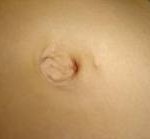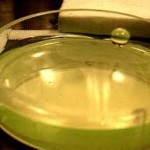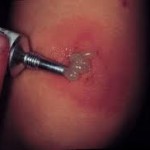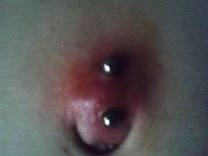If you have it, oh you just have to flaunt it! Just recently, you have just gained a newly toned set of abdominals. Whenever you see that pretty belly in front of the mirror, you tell yourself that you just have to make it a lot prettier. The following week, you end up with a navel piercing to highlight your newly acquired asset. After a few days, you acquire a navel piercing infection.
Just your luck to have such a condition when all you wanted was to have the perfect abs with the perfect piercing. But you definitely know that it’s navel piercing infection because of the itching, blood oozing, reddish coloration, pain, pus (grayish, yellowish, or greenish), and the unpleasant odor in the affected area. The first stage is the abcess that is manifested by swelling, bleeding, and pain. It is followed by cellulitis, which is more serious. It is characterized by a smelly discharge, fever, and pain. This should be under the care of an experienced doctor. If navel piercing infection isn’t treated properly and quickly, it may lead to internal infection and sepsis.
There are many possible causes of navel piercing infection. Some of them are wearing jewelry around the navel; having a tattoo near the pierced area; tight jeans for prolonged periods; carelessness in cleaning the navel; bathing in unclean waters; and frequent touching of the newly pierced navel. Ask your doctor about the following treatments for navel piercing infection so that you may be sure that what you do is under his watchful eye:
1. No jewelry
 To start treating the navel piercing infection, you should remove any form of jewelry attached to your navel. This will prevent further irritation and infection. Ask the one who performed the piercing if there could be an appropriate retainer that could be placed so that the hole will not close up.
To start treating the navel piercing infection, you should remove any form of jewelry attached to your navel. This will prevent further irritation and infection. Ask the one who performed the piercing if there could be an appropriate retainer that could be placed so that the hole will not close up.
2. Warm compress
 Applying a warm compress on the navel piercing infection will help the healthy blood circulate in that area again. This will hasten the healing process.
Applying a warm compress on the navel piercing infection will help the healthy blood circulate in that area again. This will hasten the healing process.
3. Saline solution
 A mild salt or saline solution should be used to wash the navel piercing infection. This will help in killing the bacteria that have proliferated in the site. You may have the area uncovered or covered but do not remove the retainer or replace it until the navel piercing infection is completely gone.
A mild salt or saline solution should be used to wash the navel piercing infection. This will help in killing the bacteria that have proliferated in the site. You may have the area uncovered or covered but do not remove the retainer or replace it until the navel piercing infection is completely gone.
4. Antibiotics
 An antibacterial ointment can be applied on the navel piercing infection. This should be done if the infection has already become more serious. If there is still no progress even after 48 hours of topical application, report to your doctor so that an oral anti-infective could be prescribed to you.
An antibacterial ointment can be applied on the navel piercing infection. This should be done if the infection has already become more serious. If there is still no progress even after 48 hours of topical application, report to your doctor so that an oral anti-infective could be prescribed to you.
To help in the treatment of the navel piercing infection, you should wear loose clothing for a while so that it won’t rub against the affected area. Also consider any metal allergies that you may have. There are many practical ways of preventing navel piercing infection. It would be best for you to avoid wearing fancy navel jewelry until you really establish what metals are okay for you to wear. Some people are allergic to fake gold and copper. It will take time for you to know what metals you shouldn’t wear but the wait will be worth it. Remember to clean the navel area with soap and sterilized water. You should completely remove the soap but don’t rub too much. Speaking of rubbing, do not form the habit of always rubbing your navel. Having it pierced would only make it more susceptible to navel piercing infection. As much as possible, do not prolog the use of an antibacterial ointment (longer than 48 hours).This is because the ointment blocks the supply of oxygen over the affected area. This results in the darkening of the navel area and the birth of another possible infection. When it does heal, the darkened area will take very long to lighten up again. Washing your navel area will also prevent further navel piercing infection. This makes the area free of opportunistic bacteria that may take advantage of the first type of infection that you had.
It is never easy to be extra beautiful. Sometimes, there are some procedures that backfire and one of them is evident in navel piercing infection. It would really help if you go to a piercer who practices strict aseptic methods in piercing. It is pretty much like tattooing because it is art on the skin. If you experience any irritation, strange appearance or sensation in your navel, immediately go to your doctor to prevent the condition from worsening.
